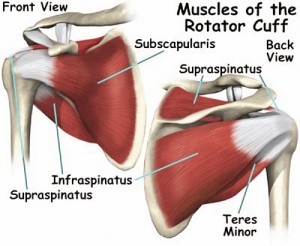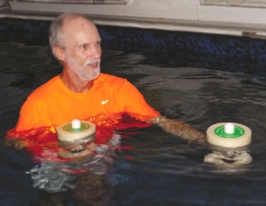 We have all heard the term “rotator cuff.” What is a rotator cuff? A group of four muscles: supraspinatus, infraspinatus, subscapularis and teres minor that connects the shoulder blade (scapula) to the arm bone (humerus).
We have all heard the term “rotator cuff.” What is a rotator cuff? A group of four muscles: supraspinatus, infraspinatus, subscapularis and teres minor that connects the shoulder blade (scapula) to the arm bone (humerus).
The rotator cuff tendons are key to a healthy functioning shoulder. They are subject to wear and tear or degeneration, as we use our arms. Occasionally, the muscles or tendons of the rotator cuff become irritated or damaged because of injury or overuse.
What are the risk factors?
- Over the age 40
- Impingement syndrome
- Poor posture
- Muscle/joint tightness
- Repetitive overhead motions

What are the symptoms?
- Shoulder pain
- Upper arm pain
- Pain/weakness lifting the arm
- Pain/weakness reaching
- Pain lying on the shoulder
Performing rotator cuff exercises in warm water can help to strengthen the muscles and make it less painful during rehabilitation.
The Journal of Orthopedic and Sports Physical Therapy published a study that compared the effects of land and water exercises on the rotator cuff. It was found that the water’s buoyancy minimizes the amount of stress on the shoulder and the resistance created by the water actually improved the effectiveness of the exercises. The study concluded, aquatic therapy allows for earlier rehabilitation after surgery or injury without compromising the patient’s safety.
So when traditional therapy is too painful to endure, aquatic therapy can offer an early start to rehabilitating the rotator cuff and allow for a speedy recovery.
Moon Physical Therapy, LLC
320 Ward Avenue, Suite 107, Honolulu, HI 96814
Aquatic Therapy, Land-based Therapy and
Cardiopulmonary Rehab Programs
808-597-1005 | www.moonpt.com


Leave a Reply